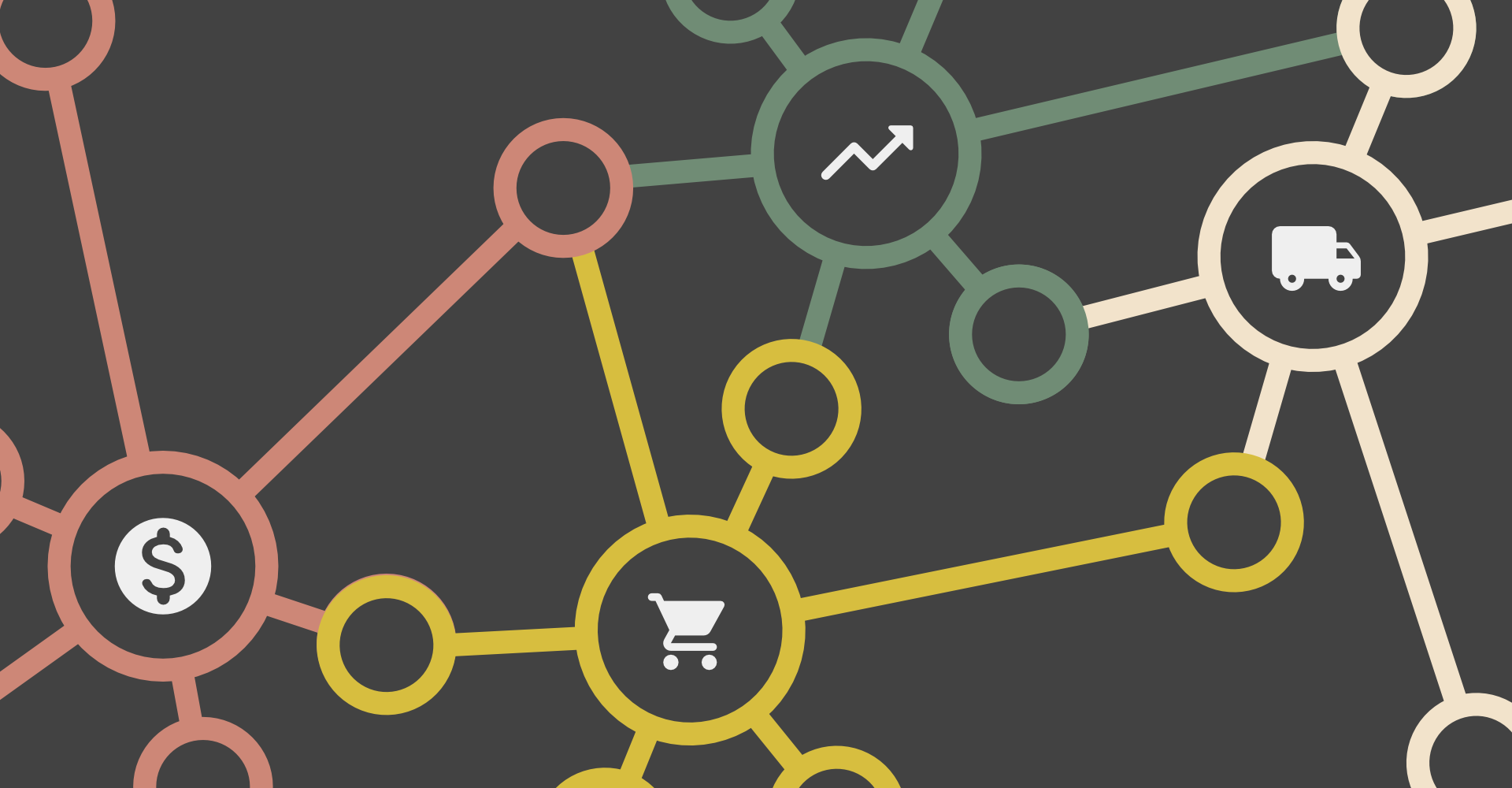Fundamental Concepts to Support Effective Business Management
Some of our clients come to us for help building and developing a brand new Enterprise Resource Planning (ERP) Network or System, others for help developing and improving smaller parts of existing integrated systems and workflows. Whatever stage a business is at in the development of their infrastructure, we always begin our training with the following orientation.
Regardless of the specifics of any individual part of a business’s ERP Network, keeping the three rules in this article in mind is fundamental. You will find yourself referring back to them regularly as systems, workflows and processes develop to support the smooth running of the business.
What is an ERP Network?
Enterprise Resource Planning (ERP) is the integrated management of a business’ main processes. Rather than refer to a product which functions to administrate these processes as an ERP System, at Sitech Industries we like to refer to the ERP Network. Different cloud-based software packages or modules linked together in an automated fashion. This perspective really helps provide high-level context on how different parts of a business link together. Even if all the different nodes are marketed under one moniker like Quickbooks or Microsoft Dynamics 365.
Let’s briefly add a little more detail than necessary in this article. Depending on the context in which we’re working we also have the option to expand the map a little to include the people or teams who use the system (that’s us humans) as part of the ERP Network too. This concept can have benefits in specific situations. However, it’s not within the scope of this article to consider that some of those nodes might make critical business decisions based on the data. Those decision-making nodes might be human or might be robot, which is why the concept can be valuable. But that’s a subject for another article. (Do take the time to read this article from last month about integrating human beings into your business more effectively.)
Within the Sitech Industries Three Rules Safe System: The ERP Network is made up of computer systems which store, share and process data in order to trigger events in another space or time. Basically databases with clever front-ends. Actually, that’s an absolutely critical concept we’ll consider straight away.
Database Management
An ERP Network in this context is just a big database management system with a clever front-end. It’s not artificially intelligent by modern standards. I mean, these databases are likely to be built on some brilliant technology that shouldn’t be down-played — unless you’re Public Health England in the throngs of a global pandemic. But for our purposes in a business, the clever part of these systems is often the user-interface design. In fact, possibly counter-intuitively, the cleverest user-interface designs actually offer us less control over how a system stores our business data.
These well-designed systems will only show us what we need to see, when we need to see it. They’ll only let us manipulate the specific data we need to manipulate at the right moment. That’s the purpose of the system. However, no system will show the data to us unless we ask. The system won’t create data for us either. In order to get the most out of any ERP Network, we have to use it properly. And that, is where the Sitech Industries Three Rules Safe System comes in:
The Sitech Industries Three Rules Safe System
Rule 1: What happens in the ERP…doesn’t stay there
What is recorded in any ERP system must reflect what happens in real-life. This one seems simple, but we often see it broken, leading to tricky situations.
Whether the system is for order and inventory management, warehouse management, a financial management or your email inbox, it’s just a really clever, intuitive front-end for a database. It stores data and recalls it quickly for us. So if you don’t enter the data into any system in a way which reflects actual real-life events, then it won’t be able to share that data with others, or respond intelligently to those real-life events.
More than once…actually all the time, our clients have explained to us why they are having issues with one of their systems. It “doesn’t work” because it doesn’t show them the data they need to see.
“How are you recording the data when that event occurs?” we ask pensively.
“Doesn’t it just know?”
Rule 2: Accuracy is your Overlord
Always be accurate.
By spending a little more time accurately recording data on any system in the ERP Network, every time, you will save countless hours in the future. It never feels that way when you’re under a heavy workload, but it always pays off.
A good quality user-interface can aid spelling and correct formatting conventions or any other human-error. But at some point a team member is going to find a short address, say a house number, street name, town and a postal/zip code. They’re going to enter the address into a CRM system which has a specific field for suburb, a specific field for town/city, and a specific field for country. They’ll be in a hurry, and will go ahead and pop the town into the suburb field because that only requires them to press the tab key once instead of twice.
Further down the line, someone else might want to know more about geographical sales data. That person is going to have to go and meticulously check months of data for errors like this, and they’re not going to have a great deal of fun.
From an operational perspective; one of the aims of any particular node in the ERP Network is to move time consuming administrative tasks away from the high-intensity trading periods.
During those high-intensity bottle-necks, we can more effectively focus on what we need to do with efficiency. That could be anything. Manufacturing products, communicating with customers or demonstrating strategy to shareholders.
Rule 3: Be Your Best Self
Your ERP Network won’t do the job for you, it will, however, enable you to be your best self. (Well some systems might, but we’ll cover that in an addendum.)
We’d like to live on a desert island, sipping pina-coladas in the sun, while our business runs itself. How do we do it? Actually don’t tell us, just make it happen.
At Sitech Industries, we’ve heard this request before. We don’t want our clients to be disappointed when they buy an exciting new computer system as the company grows, and then find that the quantity of accuracy necessary is actually taking them more time to administrate than before. It’s a bigger issue in smaller businesses because every forward step is more significant. To be successful in this scenario, any new part of an ERP Network should mean you spend the same time or less administrating your business. But with more accuracy, accountability and significantly better tools for strategic analysis. Each node in your ERP Network should be a tool that enables you to be the best at what you do.
What that means is that…
The Future of the ERP Network
Within the confines of this article, it was noted earlier that an ERP Network is defined as a group of systems that “store, share and process data in order to trigger events in another space or time“.
Artificial intelligence and a move towards data-led ERP systems for decision making (instead of data-driven human beings) does skew this position a little.
At Sitech Industries we’re fascinated by the future of the industrial landscape. We’re very aware of the myriad positive and negative effects artificial intelligence and automation is having on that landscape. Our mission statement is to make sure that robots do jobs that robots are good at so that humans can do jobs that humans are good at.
The scope of this article remains the same though. We’ve not often found it to be relevant when implementing new, or developing existing systems in most small- or medium-sized enterprises. Where it has been relevant, the Sitech Industries Three Rules Safe System still applies, except that artificially intelligent robots are not necessarily treated the same as the other nodes on the ERP Network.





